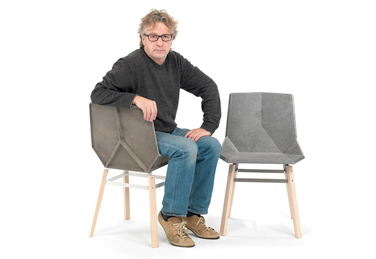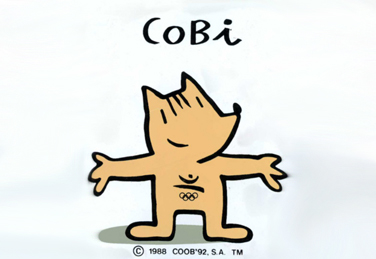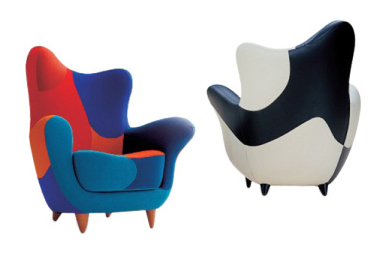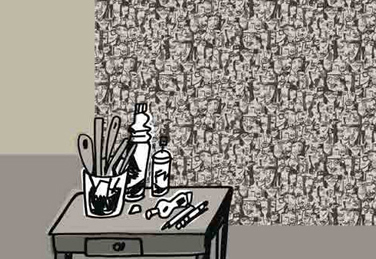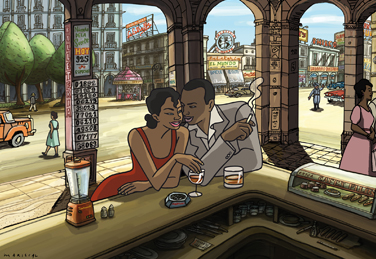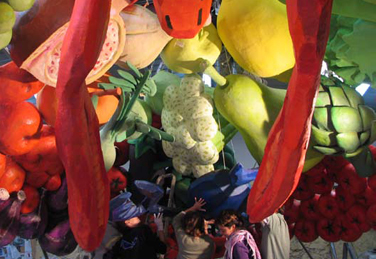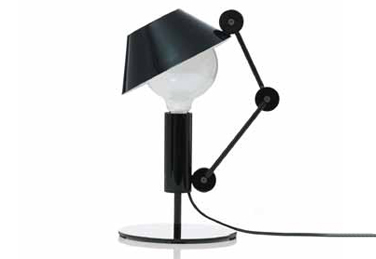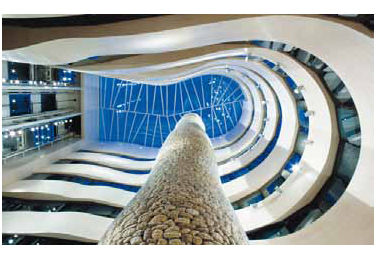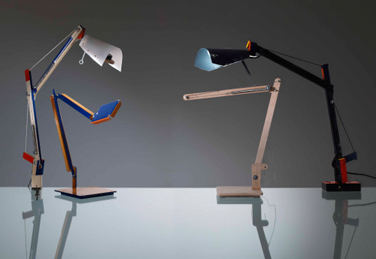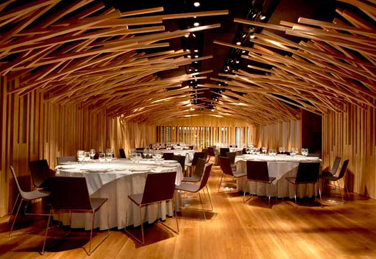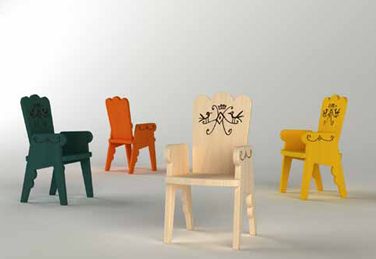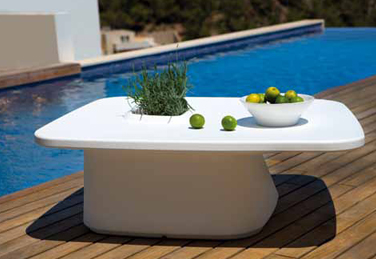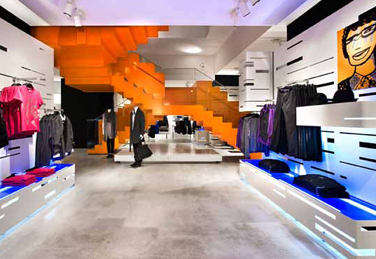Javier Mariscal sees himself as an image-maker. These images are then developed into products in different media and disciplines – in fact, there are so many it’s easy to lose count of how many there are. His projects include graphics for shops, interior design, sculptures, landscape painting, illustration, even feature films. The designer perhaps most famous for his unforgettable Olympic mascot, Cobi, for the 1992 Barcelona Olympics, is indefatigable.
For the past 30 years, Valencian-born Mariscal, who lives in his adopted city of Barcelona, has designed in an irreverent, fun, playful, occasionally provocative way – firstly on his own and, since 1989, as part of a team. Estudio Mariscal employs 22 people – administration personnel, graphic and industrial designers, architects, IT specialists and audiovisual technicians – and collaborates with many others on individual projects.
The studio has collaborated with a number of companies and collectives, such as Memphis, Akaba, Bidasoa, BD Ediciones de Diseno, Moroso, Nani Marquina, Vorwerk, Equipaje, Alessi, Sangetsu, Magis, Cosmic, Amat3, Santa & Cole, Camper, The Conran Shop, Lalique and art book publisher Phaidon.
We chatted to one of Spain’s most original, multi-talented and sought-after designers today:
Interiors from Spain: How do your projects come about? What percentage of your designs are proposals and what percentage commissions?
Javier Mariscal: In general, I only work to commission. I’m a designer and I see my role as solving other people’s problems. That said, my film, called Chico and Rita, co-directed with Fernando Trueba, started life as my proposal. But when I’m designing objects and exhibitions, I always work to commission. I only propose things when they’re personal artistic projects.
IFS: How has your style evolved in the 30-plus years you’ve been designing?
JM: My working methods have changed: for example, today I work as part of team, while originally I worked on my own. The tools we use, our clients and peoples’ needs have all changed. The world has evolved in the past 30 years, for better or for worse. I guess my style has evolved, but it retains its essence, so I can recognise my style in my earliest work.
IFS: How would you describe your current style?
JM: I always say it’s better for others to define that as I can’t be objective. But still, I’d say it’s spontaneous, my drawings are done quickly, almost like automatic writing and are easy to decode since they appeal primarily to our emotions than to reason.
IFS: Let’s go back to percentages briefly. What percentage of your designs result from inspiration, and what percentage to sheer hard work?
JM: I believe you need equal amounts of both. Even though, as the writer Mario Vargas Llosa says, inspiration is mainly perspiration!
IFS: Which area do you feel most comfortable working in: furniture design, interiors of public spaces, graphics for brand identities, lighting or audiovisual work?
JM: As I see it every colour is beautiful – and all disciplines have their attractions. In all these fields, drawing is always the starting point; drawing and design are not at odds with each other. I feel equally comfortable working in all areas. If that weren’t the case, my work wouldn’t be multidisciplinary but as I call it ‘pocodisciplinar’ (of few disciplines).
IFS: How do you see the future of Spanish design?
JM: I believe in always being optimistic because who knows what the future holds? I mean, why should we err towards pessimism when we can believe in a better future? Pessimism paralyses creativity. Industry needs good design to make it competitive – something which has become crystal clear in recent years.
IFS: What do you think of the new generations of young Spanish designers who’ve been educated abroad, sometimes because they have to or for vocational reasons?
JM: I think it’s good that designers train abroad as that means they bring a fresh approach, new ideas and interesting experiences to Spain. Young people are very competent, something we’ll soon get to appreciate and which will contribute to making the world a better place.
IFS: What projects will you be working on in the next few months?
JM: In July, we’re displaying an exhibition – which Catalunya Caixa originally commissioned us to create for the Gaudi building La Pedrera in Barcelona – at La Casa de la Provincia in Seville. In December, another exhibition – about our work – opens at The Kursaal Convention Centre and Auditorium in San Sebastian.
We’re also working on a large outdoor artistic intervention at the Centro Comercial Glòries shopping centre in Barcelona. We’re designing the visuals for a project called ‘El camino de las ardillas’ (meaning the path taken by squirrels – an environmentalist project to connect the different forests in the Iberian Peninsular). This is sponsored by various European multinationals which also want to rescue Europe’s river basins. And we’ve updated our website.
IFS: Finally, could you pick one design or project you’re especially proud of?
JM: As I said earlier, all projects have their charms and I feel very proud of many of them. If I had to cite one – a very recent one – I’d say I’m very happy to have co-created the film Chico and Rita: it’s been a treat, and I’m thrilled with the result.
By clicking on the images in our gallery of pictures (above), we invite you to check out some of Mariscal’s most iconic projects.
